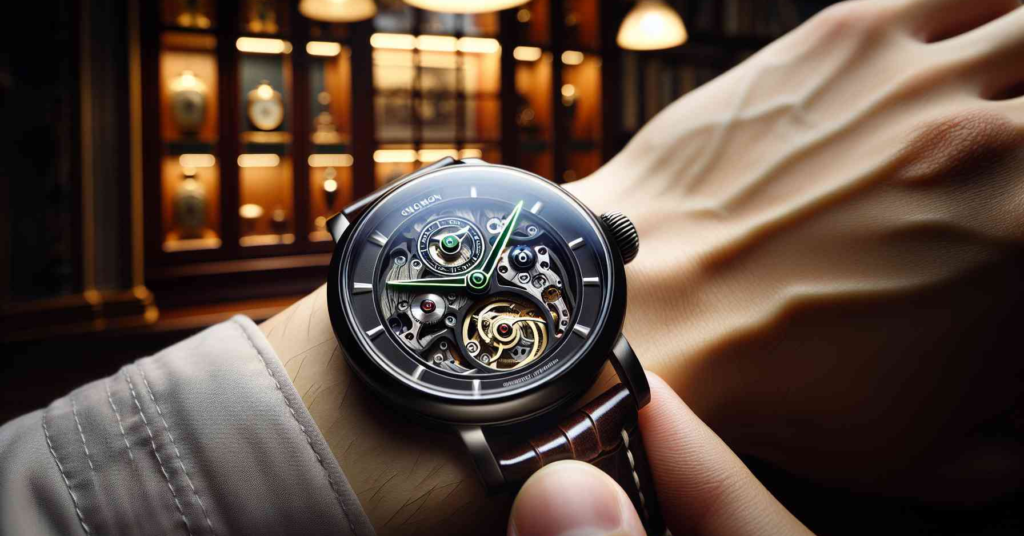The wristwatch, which originated as a tool, has become a masterpiece of the craftsmanship of watchmaking. The mechanism at the heart of every fine timepiece is its movement, which keeps track of time with extreme accuracy. This article takes us into the world of watch movements, looking at the various types of technology that power these mechanical marvels.
The Essence of Watch Movements
Movements, which people often call calibers, are the internal devices that drive a watch. There are three main types of watch movements: mechanical, quartz, and automatic. Different types have their features, giving aficionados choices of enjoyment.
Mechanical Movements: The Art of Tradition
Traditional watchmaking reaches its culmination in mechanical movements. These motions require complex gears, springs, and other mechanical parts to keep time. A definitive characteristic of watches is the sweeping action of the second hand, which serves as a visual spectacle that entices connoisseurs. High-end brands such as SOFLY, which values craftsmanship, frequently install fine mechanical movements in their watches to appeal to consumers who admire the artistry and background of watchmaking.
Quartz Movements: Precision in Every Tick
With their accuracy and affordability, quartz movements revolutionized the watch industry. Quartz watches run on a small battery, and use the piezoelectric properties of quartz crystal to regulate timekeeping. Such movements are known for being dependable, low-maintenance, and having the seconds hand tick back and forth. Although not as traditional as mechanical movements, quartz movements have become a cornerstone in the field of modern watchmaking.
Automatic Movements: Marrying Tradition and Innovation
Self-winding watches, as they’re called in the trade or automatic movements combine craftsmanship–a legacy of mechanical movements–with modern technology. The wearer’s movements produce kinetic energy, which powers the watch. With its marriage of tradition and innovation, watches with an automatic movement are prized for their integration of classical beauty into modern practicality.
Innovation in Watch Movements
Meanwhile, with the development of technology watchmakers are still pushing beyond to invent new ways in movement design. Advanced cutting-edge technologies such as silicon components, anti-magnetic materials, and advanced lubricants are used to boost performance and durability in watch movements.
Conclusion
Watch movements are a world of their own, where art and science come together. And no matter how you like to wear your time, there is a watch that appeals to every taste. Cognizant of quality and craftsmanship, mainstream brands such as SOFLY help shape the world of modern-day watches. So as we admire the intricate gears that power people’s watches, let us also accept that this work of art will not stand still.
Frequently Asked Questions (FAQs)
1. What’s the difference between mechanical, quartz, and automatic movements?
Ans: Sweeping secondhand Mechanical movements involve complicated gears and springs. Quartz movements are battery-driven, and they’re known for their accuracy as well as low price. Self-winding movements add the advantages of mechanical watches, powered by the wearer’s action.
2. Are quartz movements more accurate than mechanical movements?
Ans: Generally speaking, the quartz movements are more accurate from a daily standpoint. Yet most aficionados are attracted by the precision and antiquated elegance of mechanical mechanisms, appreciating that these movements have a second hand that sweeps instead of rotates
3. How often should I service my mechanical watch?
Ans: A mechanical watch should be serviced every 3 to 5 years so that it can operate satisfactorily. Servicing includes cleaning, lubricating, and adjusting the movement to keep it well-regulated and long-lasting.
4. Can automatic watches be overwound?
Ans: No, automatic watches are equipped with an over-winding prevention mechanism. After the mainspring has been fully wound, the mechanism disengages to protect the movement from ruination.
5. Do all watch brands use the same type of quartz movements?
Ans: No, there are many quartz movements with different characteristics and degrees of accuracy produced by several manufacturers. High-quality brands, like SOFLY, often source or design their quartz movements and achieve high levels of reliability and accuracy.
6. And what advantages do silicon components bring to watch movements?
Ans: Because silicon components are lightweight, anti-magnetic, and not affected by temperature changes, the movements of watches can move more accurately. Also, wear on the moving parts is reduced. High-quality watches, such as those made by SOFLY, today tend to use silicon in their construction.
7. Do quartz watch batteries have environmental implications?
Ans: Quartz watch batteries are not rechargeable, but their lifespan is comparatively long. In disposing of old batteries, one should follow local environmental regulations about recycling or disposal methods to prevent harming the environment.
